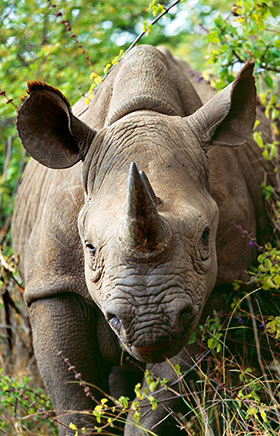Poems by Kayann Short
Archives: by Issue | by Author Name

L.A.S.T.O.N.E
by Kayann Short
Kayann writes and farms near the mouth of St. Vrain Canyon on the eastern slope of the Colorado Rockies.

I. Once upon a time, dodos went missing. First encountered by Dutch soldiers on the volcanic island of Mauritius, the flightless bird’s last reputable sighting occurred in 1662, with “last” a realization made only in hindsight, for no one realized dodos were missing until researchers went looking for them in the 1800s. By then, no dodos could be found on Mauritius and, adding insult to injury, dead dodos sent back to Europe for study were missing, too—not that stuffing dodos saves them from extinction. For a long time, dodo disappearance was not accepted as scientific fact, for how could any animal of God’s creation be forever lost? An odd bird, mythic to some, an imaginary creature of Alice in Wonderland fame, its extinction seemed as chimerical as its existence.
But where did dodos go? First theories proposed they had been killed en masse by sailors for sport or food, but evidence for this was scant. More recent theories suggest vermin introduced from Dutch ships exterminated dodo eggs from nests and competed for dodo food, an early lesson, should anyone choose to learn it, in the dangers of ecosystem disruption.
Other human-induced extinctions followed: the last passenger pigeon died in 1914. She even had a name—Martha.
When Europeans first came to North America, passenger pigeon flocks were so large they blocked out the sun.
In the mid-1800s, mass hunting of the birds began.
In less than a hundred years, they were gone.
II. Sudan died March 19, 2018, at the 90,000 acre Ol Pejeta conservancy in Kenya. By then, Sudan had become an animal celebrity, #lastmalestanding, the last male northern white rhinoceros. His caretaker, Zach Metai, who considered himself half human, half rhino from his many years caring for Sudan, cried at his friend’s death. As the last male of a species, this singular animal received 40,000 visitors a year, becoming more famous as “the last” of his kind than he ever would have been if his species had flourished. Extinction offers a grim Kodak moment, a perversion of celebration, as we memorialize the ones we’ve lost on t-shirts, mugs, and phone cases.
III. In medieval times in Europe, villagers gathered to harvest the grains that would feed themselves and their livestock through the long winters. With sickles and scythes, they began at the field’s perimeter, slashing and hacking their way toward the middle. As the crops were felled, bolting rabbits and other small game were killed outright or chased back into the center for the bloody reaping to come. By decreasing the inhabitable space, a gathering place for small creatures seeking shelter and food became an arena of death, for there was no way to escape the slaughter of this mowing game, harvesting two crops at once until nothing was left.
IV. Recently, the United Nations reported that one million species of plants and animals are at risk for extinction due to human-induced climate change.
V. Many scientists suggest the planet is currently experiencing a sixth major extinction. In previous extinctions, as much as 96 percent of species was lost. More than 99 percent of all species to have ever lived on earth are now extinct. Prior extinctions were caused by natural disasters: volcanoes, asteroids, glaciation, and sea level falls. The sixth, however, is caused by us.
Ecologically speaking, the human species is toast.
VI. Within our lifetimes, we will lose more kinds of beings than we even knew existed.
One year ago, more species were lost.
One month ago, still others.
One week ago, the future became more precarious.
One day ago, ditto.
One minute ago, even more so.
One second to go, and it’s nearly over.
VII. Sometimes I imagine all the animals in the world thrown together in a gigantic bowl as a kind of animal salad, with two each of the creatures beloved by schoolchildren—giraffe, elephant, lion, gorilla—and the millions more we don’t commemorate on t-shirts. Lifted on the sea of ecological crisis by our collective good will toward all the world’s creatures, this bowl-shaped sanctuary ensures animal survival. It worked before, didn’t it?
VIII. Schoolchildren in Nepal celebrate Vulture Awareness Day on the first Saturday in September with song and dance, poetry competitions, rallies, and vulture counts. Efforts to protect the ecologically vital vulture population, including the banning of diclofenac, a deadly chemical used for livestock, are reversing the loss of this ecologically vital bird.
In Wales, youth conservationists work with farmers in the Penpoint Project to transform agricultural practices toward wildlife habitat restoration, a small project as a blueprint for other local campaigns.
And Greta, dear righteous, powerful Greta, who shames the politicians for their inaction, inspires us all.
IX. Together, we are writing the Last Animal Story to Oppose Nature Extinction. When you can’t go back, go forward. Big actions start small. Start local. Start now.
X. Because the last thing we need is another dead animal t-shirt.
© Kayann Short